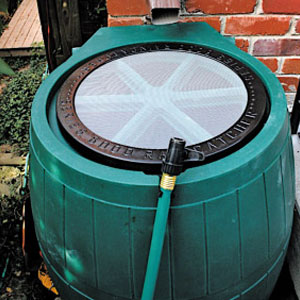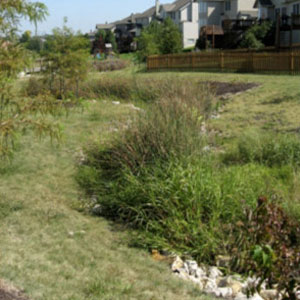
Chemicals in pesticides move through the environment and are often consumed by humans in the long run. Image credit: Landscape For Life
Limit Exposure to Pesticides
When most people think of pesticide use, they think of agricultural land. But pesticides are typically applied at much higher rates to residential landscapes than to farms — 20 times higher, according to the U.S. Environmental Protection Agency (EPA).
The enormous quantity of pesticides used in home landscapes raises a number of health and environmental concerns, starting with the potential for accidental poisonings of humans and pets. The possibility of cancer or other illnesses as a result of nonaccidental, chronic exposure to yard pesticides is the subject of an ongoing scientific debate. Children and fetuses, whose internal organs are still developing, are particularly vulnerable to the health problems pesticides may pose. Although pesticides and their use are regulated by the EPA, the uncertainty over the long-term effects of exposure to even low levels led the American Medical Association to recommend that we limit exposure to these chemicals and use safer alternatives.
Overuse of pesticides is contributing to the chemical load not just in our bodies, but in the environment at large. It’s estimated that 5 percent or less of the insecticides and herbicides we spray ends up on the targeted pest. The rest ends up on plants, in the soil and in the air — via drift, it can also land on nearby people or pets. Pesticides in runoff find their way into drinking water supplies and local waterways; in fact, pesticide pollution was found in every stream and over 90 percent of the wells sampled in a study by the U.S. Geological Survey.
In waterways, pesticides can kill fish and other aquatic life, and it’s believed that pesticides kill millions of birds each year and can impair others’ ability to reproduce. They’ve been linked to the decline of frog populations, as well as earthworms and other important soil animals. They’ve also led to the loss of pollinators and the beneficial insects that would otherwise help keep pest populations in our landscapes in check.










